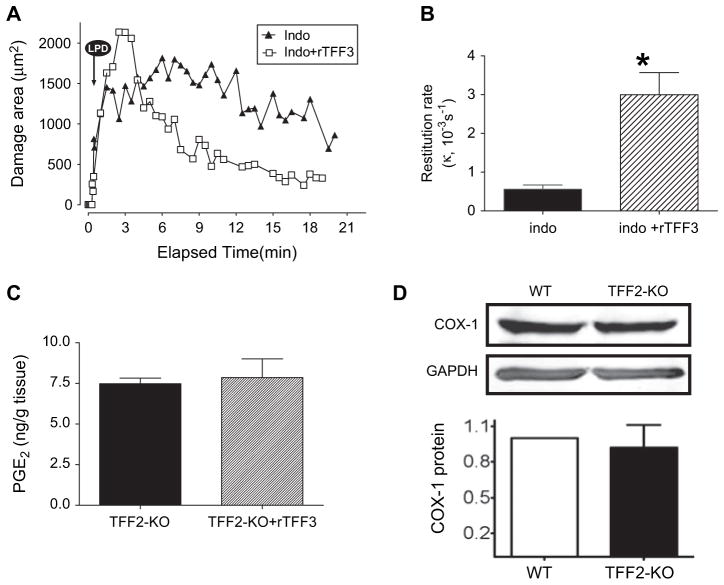Figure 5.
Role of cyclooxygenase (COX) in gastric restitution mediated by trefoil factor 2 knockout (TFF2-KO) mice. (A) Representative experiments examining the damaged area in response to laser-induced photodamage (LPD) imposed on TFF2-KO mice after 1 h indomethacin pretreatment (5 mg/kg subcutaneously), in either the absence (filled triangles) or presence (open squares) of recombinant rat TFF3 (rTFF3). (B) Values of the restitution rate compiled from experiments performed as in A (n=3, indo.; n=5, indo+rTFF3). In an unpaired t test, values in the presence of indomethacin were not different compared with rates in the absence of indomethacin in figure 3C. In the presence of indomethacin, rTFF3 significantly accelerated the restitution rate (p<0.05). (C) Prostaglandin E2 (PGE2) levels (measured by enzyme immunoassay; see the Methods section) in TFF2-KO animals in the absence or presence of rTFF3 (D) Upper panel: western blot analysis qualitatively reports COX-1 expression in wild type (+/+) and TFF2-KO mice gastric mucosa, using glyceraldehyde phosphate dehydrogenase (GAPDH) as loading control in the same blots. Lower panel: densitometry of COX-1 blots, normalised to GAPDH and then standardised to the response in wild-type (WT) animals, shows no significant difference in COX-1 protein between phenotypes (n=4).

